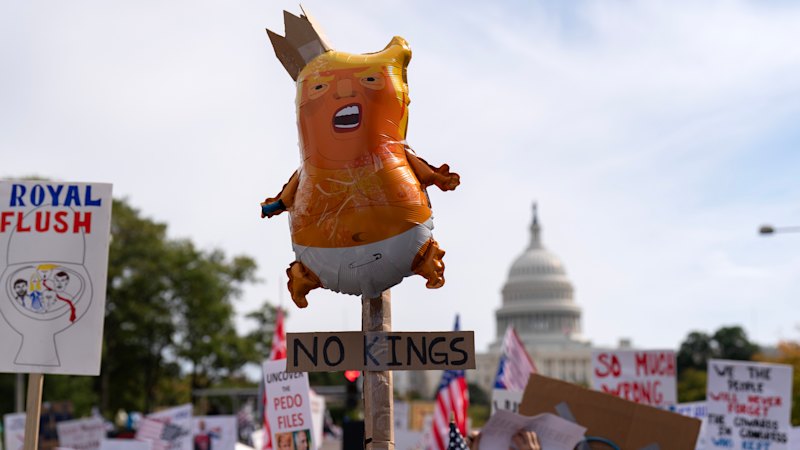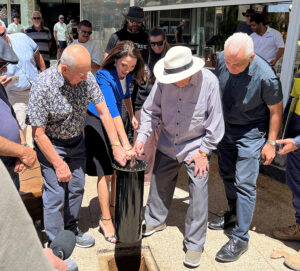
On October 18, 2025, millions of Americans participated in what is now recognized as the largest coordinated demonstration against President Donald Trump since he took office in January 2017. More than 2,600 rallies unfolded across the nation, with demonstrators expressing their concerns over what they perceive as an authoritarian administration undermining democracy, due process, and constitutional rights.
Mass Protests Across Major Cities
In the nation’s capital, Washington, D.C., thousands gathered on Pennsylvania Avenue, the thoroughfare connecting the U.S. Capitol to the White House. Protesters carried signs denouncing Trump’s policies and actions. Among them was a man dressed as a biblical figure, proclaiming “no Trumps in heaven,” while another donned a baby costume resembling Trump, complete with orange face paint and a nappy. The atmosphere was charged with a sense of urgency, as many participants voiced their fears for the future of American democracy.
Participants such as Andy Ravenna and Kevin Rehac from Arlington, Virginia, displayed signs reading “Bring back checks and balances” and “So bad even the introverts are here.” Rehac noted that this protest felt particularly significant, stating, “It’s just incredible what’s going on in America.”
Protesters across the country echoed similar sentiments. In New York City’s Times Square and Boston Common, crowds gathered to express their discontent. In Chicago, participants filled Grant Park, while over 1,500 people assembled in Birmingham, Alabama, a city historically significant for civil rights protests.
Voices of Dissent
Among the speakers at the Washington rally was long-serving Vermont Senator Bernie Sanders, who addressed the crowd with a passionate plea. “Millions of Americans are coming out today not because they hate America – we’re here because we love America,” he stated. Sanders emphasized that this protest marked a pivotal moment in U.S. history, adding, “This is not the end; this is just the beginning.”
Many participants expressed their disapproval of media outlets like Fox News, which some protestors, including an individual named Scott who chose to remain anonymous, accused of spreading divisive rhetoric. “We’ve had 30 years of poisoning against the American mind,” he said, attributing the current political climate to a long-standing campaign against governmental integrity.
The protests occurred against a backdrop of a government shutdown that has lasted for 18 days. Ongoing disagreements between Senate Democrats and Republicans over extending health care subsidies have stalled efforts to pass a spending bill, further complicating the political landscape.
Trump, who was not present at the protests, was reported to be at his Mar-a-Lago club in Florida. In a conversation with Fox News, he dismissed the protesters’ claims, stating, “They’re referring to me as a king. I’m not a king.” Meanwhile, House of Representatives Speaker Mike Johnson characterized the protests as a “hate America rally” led by various groups he labeled as Antifa and Marxists.
As the protests unfolded, they served as a reminder of the deep divisions within the country. The movement has reignited discussions about the state of democracy in the United States and the role of grassroots activism in shaping political discourse. With a notable turnout, the “No Kings” protests highlighted a collective concern for the future and the need for accountability in leadership.
Overall, the events of October 18, 2025, mark a significant moment in the ongoing conversation about power, democracy, and the responsibility of citizens to engage in the political process.






